These ladyfingers are such a treat to make at home. Slightly crisp on the outside but soft, light, and airy on the inside, these homemade ladyfingers are so easy to make in a few simple steps! These sponge-cake cookies also bake in just 12 minutes, so they’re not just easy but quick to make.
Perfect for tiramisu, Charlotte cakes, trifles, and more, once you try this homemade version, you won’t want store-bought ones again. These homemade versions are softer than what you find at the store, so they soak up even more flavor. Want another easy dessert? Try my eclairs recipe, cream puffs recipe, or zeppole recipe.
What You Need to Make This Recipe

Eggs — the egg whites and yolks are used separately in this savoiardi recipe. When whipped, the egg whites lighten the ladyfingers and help them rise.
Sugar — make sure to use white granulated sugar for the batter.
Cornstarch — adding cornstarch to the batter helps absorb moisture and adds structure to the batter to help keep the ladyfingers from spreading in the oven.
Vanilla extract — for the best flavor, use real vanilla extract instead of artificial extract. You can also try making my homemade vanilla extract for an extra boost of flavor.
Powdered sugar — make sure to dust the ladyfingers with powdered sugar and not granulated sugar, or the crust of the cookies won’t be as soft.
How to Make Ladyfingers
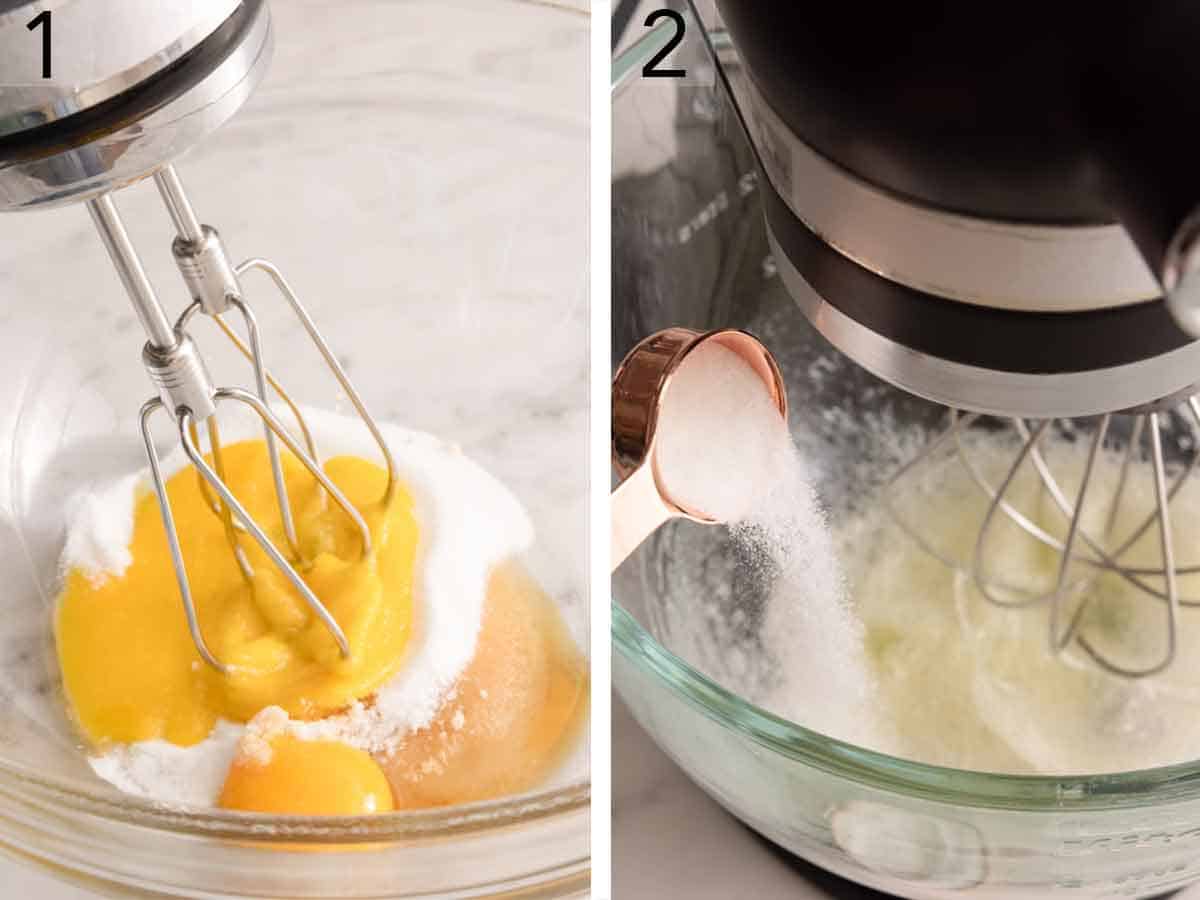
1. Place the egg yolks, ¼ cup sugar, vanilla, and salt in a large mixing bowl. Beat on medium speed until pale and fluffy.
2. Place the egg whites in a separate bowl. Using clean beaters, beat at high speed until soft peaks form. While beating, add in the remaining ¼ cup sugar a spoonful at a time and beat until the egg whites are thick and glossy.
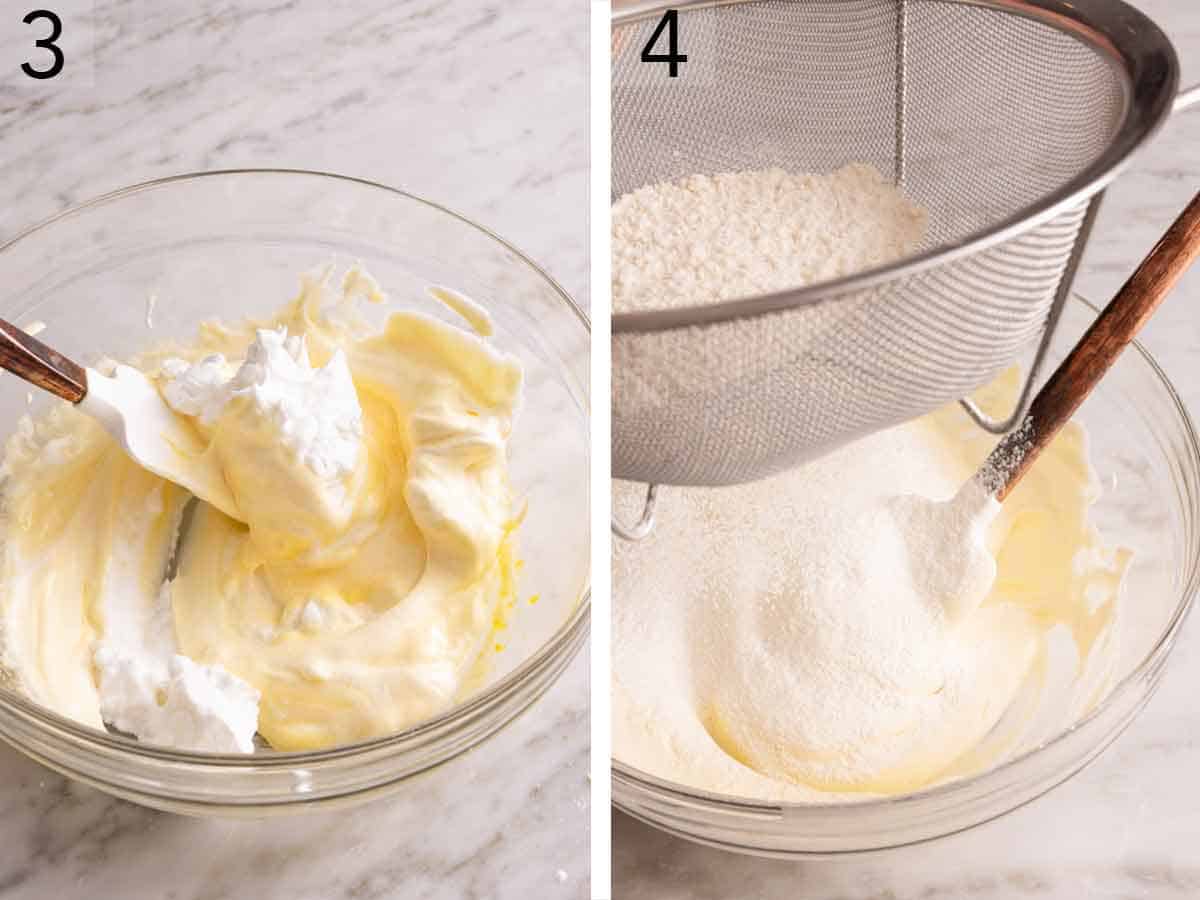
3. Beat the egg yolk mixture again just to remix, then fold the egg whites into the egg yolks in batches until well combined.
4. Sift the flour and cornstarch into the egg mixture.
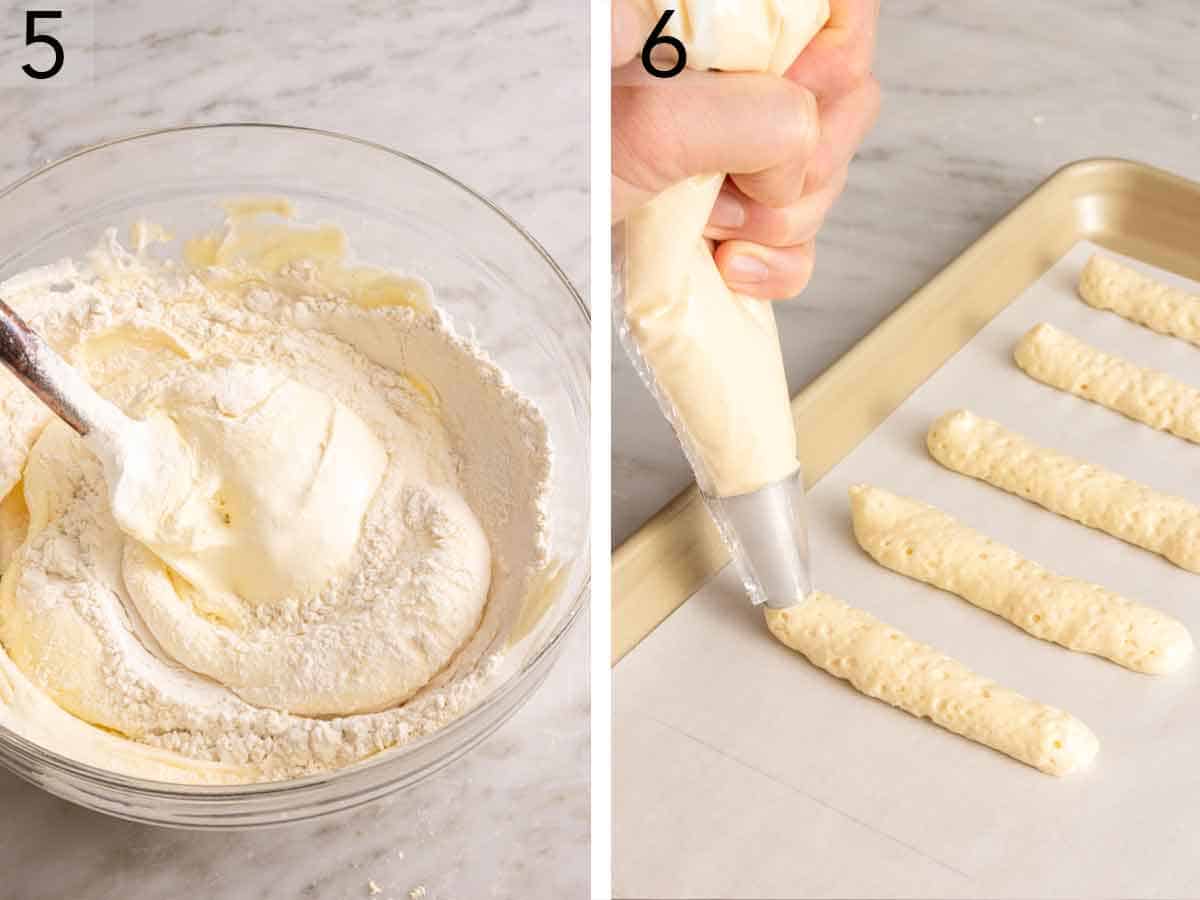
5. Fold until no dry streaks remain.
6. Transfer the batter to a piping bag. Pipe the batter into 4-inch long logs (about 1-inch wide) on the baking sheet and dust generously with powdered sugar. Bake for 12 to 15 minutes or until lightly golden and firm to the touch. Let cool completely on the baking sheet.
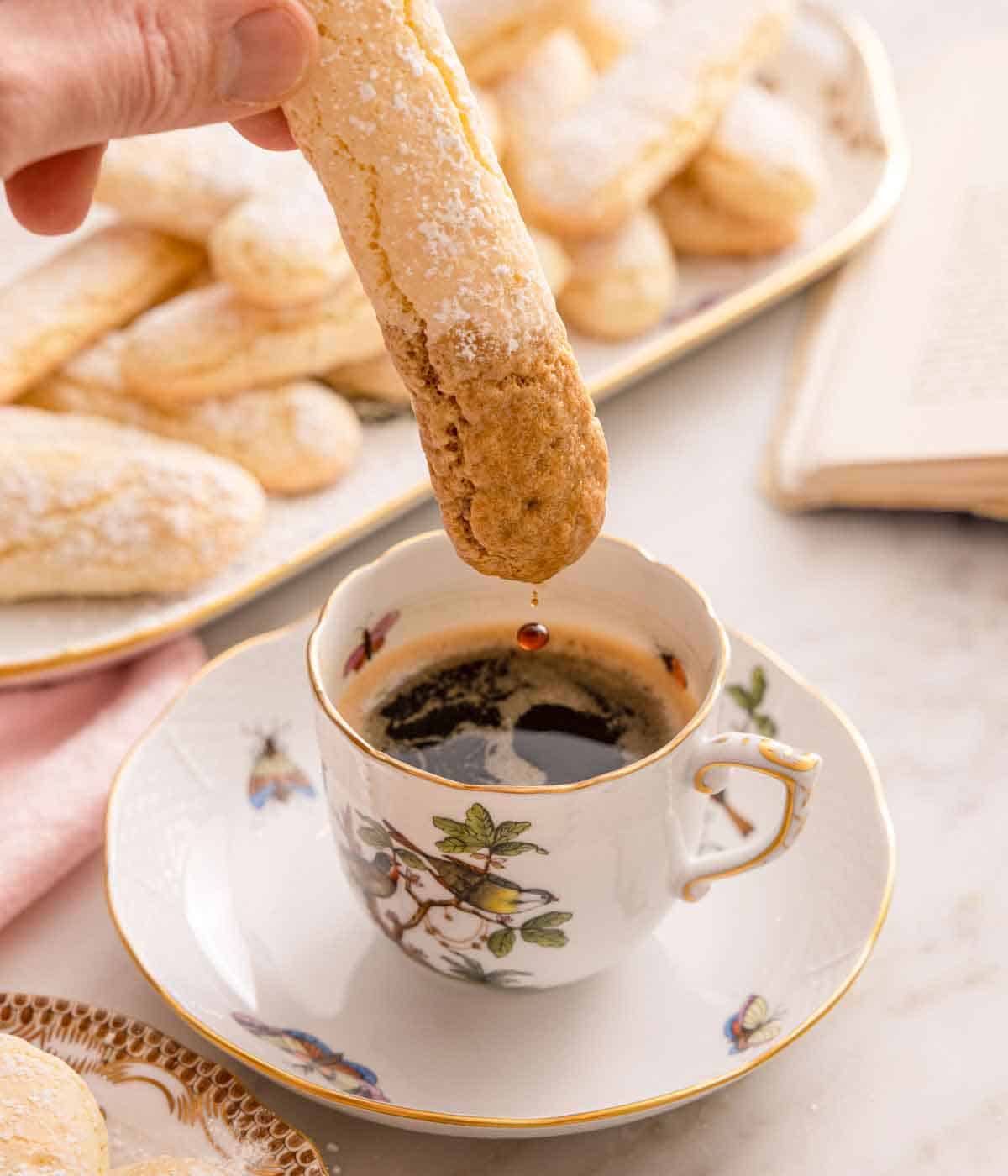
Pro Tips for Making This Recipe
- Don’t skip dusting the dough with confectioners’ sugar before baking! The sugar helps the cookies bake up taller and airier rather than spreading and getting too thin.
- A shorter bake time will result in a slightly softer and chewier cookie, and a longer bake time will yield a crisp, more golden cookie. Both are delicious, but you can decide how you’d like to enjoy them! If used in tiramisu, I lean towards a darker, crisper cookie for flavor and soaking up the coffee syrup.
- Make sure to measure the flour correctly. The dough will dry if you add too much flour, and your ladyfingers won’t be light and airy. The ideal way to measure flour is with a kitchen scale. If you don’t have one, fluff your flour with a spoon, sprinkle it into your measuring cup, and use a knife to level it off.
- It is essential to have a clean and dry bowl for whipping the egg whites. The egg whites also cannot contain any egg yolk. You will have difficulty whipping up the whites if the bowl is not completely clean or yolk-free. Avoid using a plastic bowl, as it’s more likely to hold onto grease.
- Eggs are easier to separate when cold, but you get better volume with egg whites closer to room temperature. I recommend separating them in advance.
- When folding in the egg whites, turn the mixture in on itself with a cutting motion, not a stirring motion. This way, you do not deflate the egg whites.
- You can print a template and place it underneath the parchment paper if you want perfectly uniform ladyfingers. Just make sure you remove the template before baking the cookies.
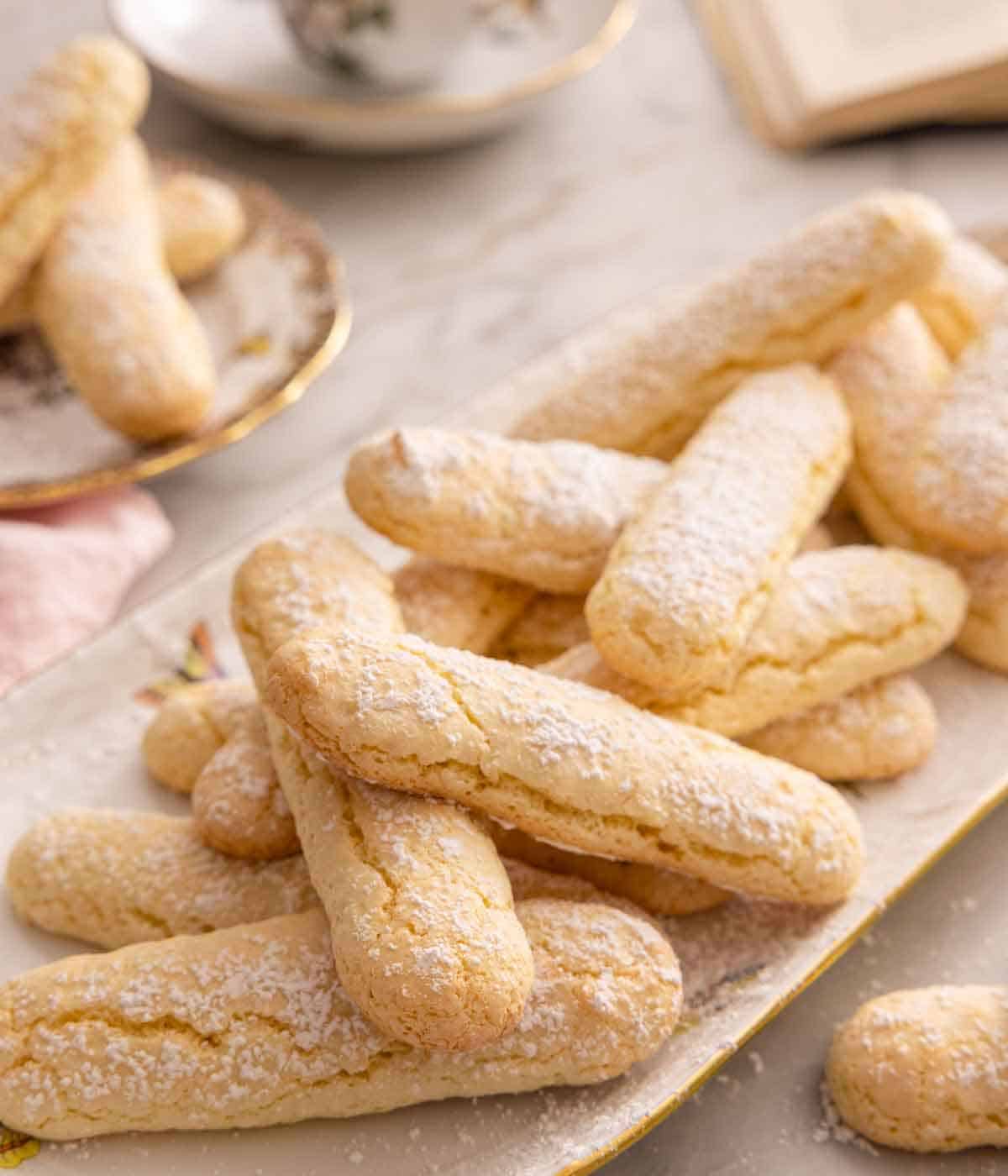
Frequently Asked Questions
You can store ladyfingers in an airtight container at room temperature for up to 2 weeks. However, their texture is best when enjoyed immediately. They will soften as they’re exposed to air, so make sure to store them immediately once at room temperature.
You can freeze ladyfingers! To freeze these cookies, once they are at room temperature, transfer them into a large freezer-safe bag and add parchment paper between the layers. Freeze for up to one month.
If your ladyfingers come out of the oven flat and you’ve dusted generously with powdered sugar, it’s most likely that the egg whites were not fully whipped or the batter was overmixed. If you overmix the batter, the whipped egg whites will deflate, and the cookies won’t become light, airy, and tall.
If you want to use these ladyfingers in a tiramisu recipe, I recommend making them a day or two ahead of time so they can dry out. You want them to be a tad bit stale to soak up the liquid. You can also use these ladyfingers in a trifle or simply serve it with coffee or tea. You can even make these into a chocolatey treat by dipping them in melted chocolate.
Generally, ladyfingers are soft, like sponge cookies. However, increasing the baking time can make these as crispy as you prefer.
These ladyfingers got their name as they resembled a woman’s thin, delicate fingers. However, they’re also known as savoiardi in Italian, as they were first served in the court of Amadeus VI, Duke of Savoy.
If you’ve tried this Ladyfingers recipe, then don’t forget to rate the recipe and let me know how you got on in the comments below, I love hearing from you!
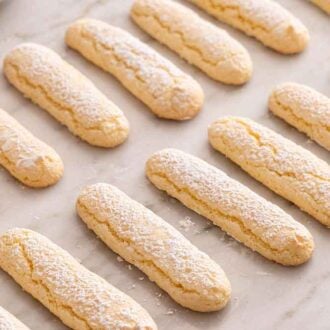
Ladyfingers
Video
Equipment
- Baking Sheets
- Parchment paper
- mixing bowl
- Electric hand or stand mixer
- Sifter
Ingredients
- 3 large eggs separated
- ½ cup granulated sugar divided (100g)
- ½ teaspoon vanilla extract
- ¼ teaspoon salt
- 1 cup all-purpose flour (120g)
- 5 teaspoons cornstarch
- powdered sugar for dusting
Instructions
- Preheat the oven to 350F. Line two large baking sheets with parchment paper. Place a large round piping tip in a large piping bag.
- Place the egg yolks, ¼ cup sugar, vanilla, and salt in a large mixing bowl. Beat on medium speed until pale and fluffy.
- Place the egg whites in a separate bowl. Using clean beaters, beat on high speed until soft peaks form. While beating, add in the remaining ¼ cup sugar a spoonful at a time. Beat until the egg whites are thick and glossy, about 2 more minutes.
- Beat the egg yolk mixture again just to remix, then fold the egg whites into the egg yolks in batches until well combined. Sift the flour and cornstarch into the egg mixture and fold until no dry streaks remain. (If the batter is a little lumpy, that’s okay. Don’t over-mix the batter.) Transfer the batter to the prepared piping bag.
- Pipe the batter into 4-inch long logs (about 1-inch wide) on the baking sheet, spacing them about 2 inches apart. Dust one sheet generously with powdered sugar.
- Bake the dusted sheet for 12 to 15 minutes or until lightly golden and firm to the touch. Let cool completely on the baking sheet. Dust the remaining baking sheet with powdered sugar and bake again as directed. Use or store immediately after they cool, as they will soften the longer they are exposed to air. Ladyfingers can be stored in an airtight container at room temperature for up to 2 weeks.
Notes
- Don’t skip dusting the dough with confectioners’ sugar before baking! The sugar helps the cookies bake up taller and airier rather than spreading and getting too thin.
- A shorter bake time will result in a slightly softer and chewier cookie, and a longer bake time will yield a crisp, more golden cookie. Both are delicious, but you can decide how you’d like to enjoy them! If used in tiramisu, I lean towards a darker, crisper cookie for flavor and soaking up the coffee syrup.
- Make sure to measure the flour correctly. The dough will dry if you add too much flour, and your ladyfingers won’t be light and airy. The ideal way to measure flour is with a kitchen scale. If you don’t have one, fluff your flour with a spoon, sprinkle it into your measuring cup, and use a knife to level it off.
- It is essential to have a clean and dry bowl for whipping the egg whites. The egg whites also cannot contain any egg yolk. You will have difficulty whipping up the whites if the bowl is not completely clean or yolk-free. Avoid using a plastic bowl, as it’s more likely to hold onto grease.
- Eggs are easier to separate when cold, but you get better volume with egg whites closer to room temperature. I recommend separating them in advance.
- When folding in the egg whites, turn the mixture in on itself with a cutting motion, not a stirring motion. This way, you do not deflate the egg whites.
- You can print a template and place it underneath the parchment paper if you want perfectly uniform ladyfingers. Just make sure you remove the template before baking the cookies.



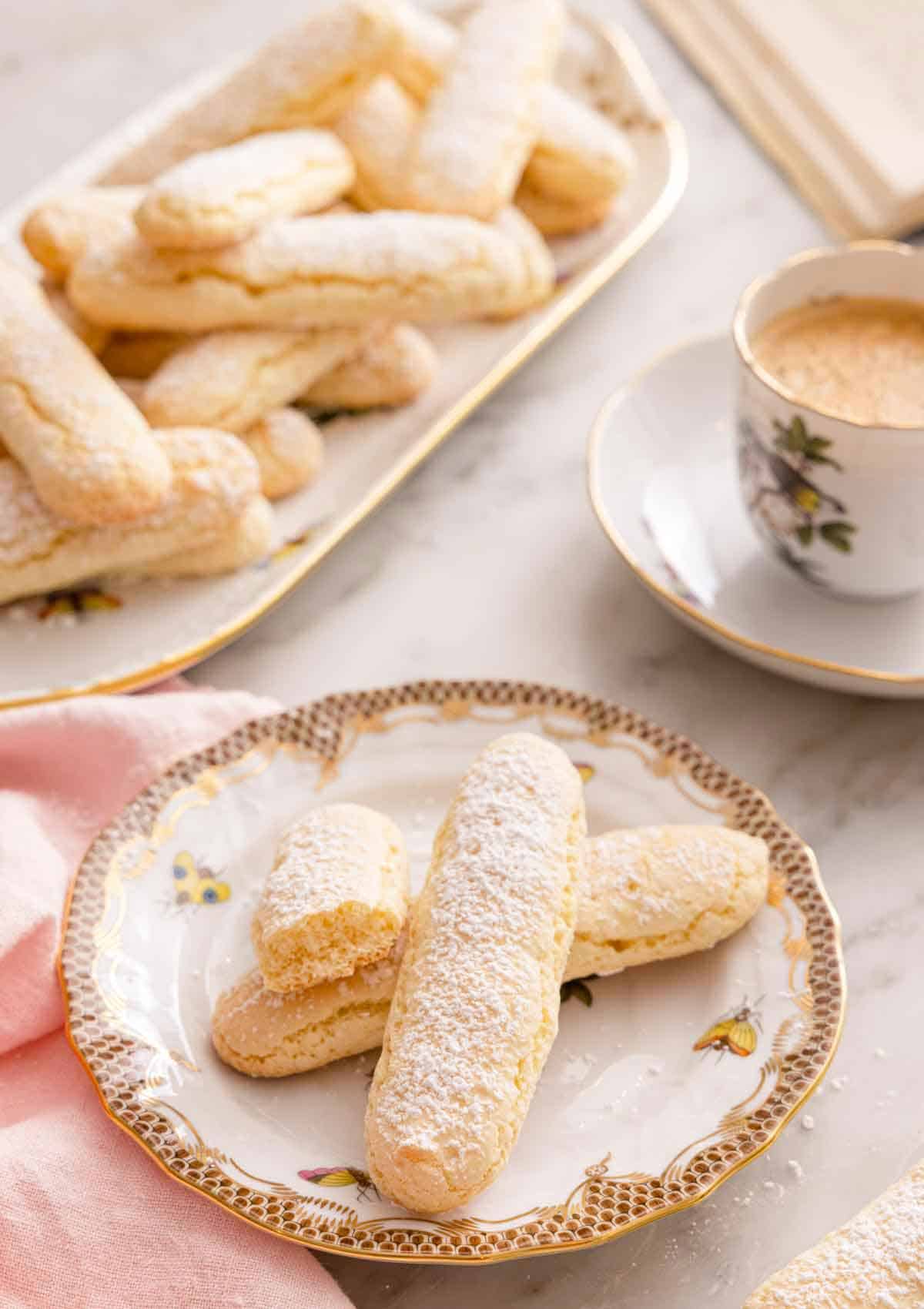

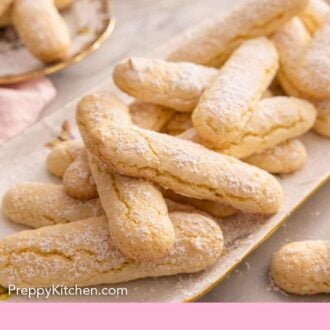
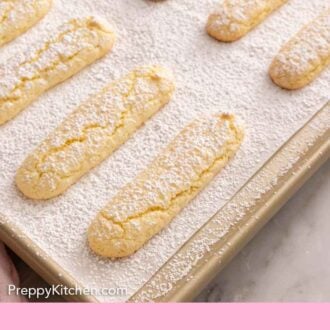
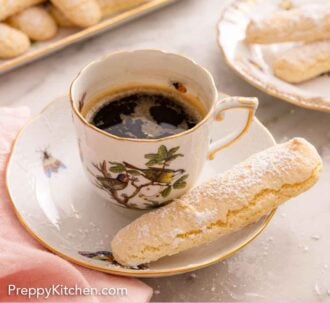
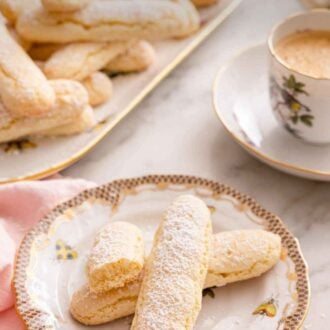

Nurul Huda Muhamad Nor says
Preppy Kitchen has been my to go search when it comes to baking especially. Fool proof recipes. Easy to understand written recipes plus with the help of high quality videos. Thank you so much John Kanell.
Judy says
This recipe is great. It came out beautifully! I have tried to print or save your recipes as a PDF and though I can see the recipe before I hit print or save, it is blank when printed or saved. I don’t have this issue on other sites. Have others had the same problem? Thank you for all the wonderful recipes!
Kim F. says
I loved these. Had enough to make one tiramisu and freeze the rest for later.
Helene says
Awesome recipe! It worked perfectly. My child is highly allergic to corn so I used potato starch instead without any problem.